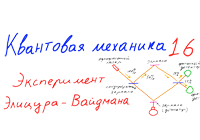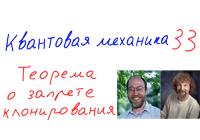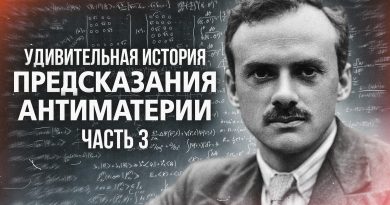Hydrogen atom and SO(4) symmetry
Luboš Motl, November 25, 2011
«Shut up and calculate» is not only a wise attitude to the questions about the foundations of quantum mechanics; it is a constructive approach to physics in general. But what about the idea to walk the walk and calculate something?
Symmetries play a crucial role in physics – in classical physics and especially in quantum physics. It turns out that the Kepler problem in quantum mechanics (much like in classical physics) may be fully solved by symmetry considerations.
Aside from the interesting mathematical details, this text wants to point out that observables i.e. operators, and not wave functions, are what quantum physics is all about. Indeed, to solve the simplest atom, I won’t even have to mention any particular «states» or «wave functions».
Task: Find the energy spectrum of all bound states of the Hydrogen atom in non-relativistic quantum mechanics and their degeneracy purely by symmetry considerations. The Hamiltonian is
$$ H = \frac{p^2}{2m} — \frac{k}{r},\qquad k\,\,\,\mbox{is a constant} $$
Hints:
- Define the orbital angular momentum
$$ L_i = \epsilon_{ijk} x_j p_k, \qquad \epsilon_{123}=+1$$ and compute the commutators \([L_i,L_j]\) i.e. the Lie algebra. What is the commutator of \(L_i\) with \(H\)? - Define the Runge-Lenz vector
$$ \vec A = \frac{1}{mk} \vec L \times \vec p + \frac{\vec x}{r}.$$ Is there any ordering ambiguity in the cross-product above? Compute the commutators
$$[L_i,A_j], \qquad [A_i,A_j], \qquad [A_i,H]$$ The last commutator tells you, in the classical limit, whether the elliptic orbit rotates or not. Write down the \([A_i,A_j]\) commutator as \(H\) times something. (Anti)symmetrization is a good bookkeeping device for many terms. - Now prove that the six generators that are components of \(\vec L,\vec A\) generate a Lie algebra isomorphic to \(SO(4)\). In other words, find the relation between \[J_{IJ},\,\,\, I=1,2,3,4,\] on one side, and components of \(\vec L,\vec A\) on the other side, such that the commutators translate into each other. Note that \(J_{IJ}\) is a matrix with \(+i\) on the position \((I,J)\) and \(-i\) on the position \((J,I)\) and otherwise filled with zeroes.
Work in a formalism in which a \(SO(3)\) subgroup of \(SO(4)\) is manifest. - Now show that this \(SO(4)\) Lie algebra is isomorphic to \(SU(2)\times SU(2)\), two mutually commuting copies of the usual \(SU(2)\) algebra. Warning: the previous \(SO(3)\) subgroup is neither of the \(SU(2)\)’s here. This isomorphism is important for many considerations, for example in the Euclidean four-dimensional spacetime (with imaginary time). Hint: define the generators of \(SU(2)_M\times SU(2)_N\) as
$$ M_i = \alpha L_i + \beta A_i, \qquad N_i = \alpha L_i — \beta A_i$$ in such a way that \([M_i,N_j]=0\) and \([M_i,M_j]\) as well as \([N_i,N_j]\) behave like the normal \(SU(2)\) algebras. The «numbers» \(\alpha,\beta\) will be determined and they can depend on the energy \(E\): once you study a particular energy level, there can still be a representation of the \(SO(4)\) symmetry living at this level but the operator \(H\) is equal to a number at this subspace of the Hilbert space. - Prove that \(\vec M^2 = \vec N^2\). What does it mean for \(\vec L, \vec A\)? Write the eigenvalue of \(\vec M^2 = \vec N^2\) in terms of \[j=0,1/2,1,3/2,\dots\] What is the degeneracy of the multiplet as a function of \(j\), and as a function of \(n=2j+1\)?
- Compute \[H(M^2+\gamma)\] where \(\gamma\) is a constant (like \(1/4\)) such that the result is simple. Using this result, write \(H\) (the energy eigenvalue) as a function of \(M^2\) and using the previous result, write down the allowed values of \(n=2j+1\), the allowed negative energy eigenvalues, and the degeneracies of the corresponding levels.
Solution
We will solve the quantum Coulomb/Kepler problem:
$$ H = \frac{p^2}{2m} — \frac{k}{r},\qquad k\,\,\,\mbox{is a constant} $$ With
$$ L_i = \epsilon_{ijk} x_j p_k, \qquad \epsilon_{123}=+1,$$ it is easy to see that \([L_i,L_j]=i\epsilon_{ijk}L_k\) as long as
\[[x_i,p_j]=i\delta_{ij}.\] The commutators \([L_i,H]=0\) vanish because \(H\) is a scalar invariant under rotations. The commutator of each term in \(H\) with \(L_i\) is zero separately. In the Runge-Lenz vector
\[ \vec A = \frac{1}{mk} \vec L \times \vec p + \frac{\vec x}{r},\] there is indeed an ordering ambiguity in the first term. The vector wouldn’t be a Hermitian operator (the anti-Hermitian part would be proportional to \(\vec p\)). Because this is just a hint of a bigger problem and hints don’t have to be exactly accurate, you should have figured out that \(\vec L\times \vec p\) should have been
\[(\vec L\times \vec p — \vec p\times \vec L)/2\] which is the Hermitian part of the expression promoted above. The refined operator \(\vec A\) then commutes with the Hamiltonian
\[[A_i,H]=0\] which classically encodes the fact that the direction of the elliptic orbit (from the focus to the perihelium, for example) is not rotating. (It is equivalent because even classically, the vector \(\vec A\) is demonstrably conserved; and while at the perihelium, you may see that this is exactly where the direction of \(\vec A\) points.) Without taking the Hermitian part, \(\vec A\) wouldn’t commute with \(H\) because \(\vec p\) doesn’t. The commutator
\[[L_i,A_j] = i\epsilon_{ijk} A_k\] expresses the fact that \(\vec A\) is a vector, and vectors always have this commutator with \(\vec L\). The commutator of two \(\vec A\) components is more interesting. The result is
\[[A_i,A_j] = i\epsilon_{ijk} L_k \frac{-2H}{mk^2}.\] It’s a lengthy calculation. Schematically (omitting indices and numerical constants), the terms in the commutator have the form
\[\left[\frac{xp^2}{mk} + \frac{x}{r}, \frac{xp^2}{mk} + \frac{x}{r}\right] = \frac{xp^3}{m^2k^2} + \frac{xpx}{mkr}\] which has the right form to match with the product of \(L=xp\) and \(H=p^2/m+k/r\) (schematically) divided by \(mk^2\). The numerical constants and indices work, too. It is helpful to calculate the Poisson bracket first which leads to the same result. Because the commutator of two Hermitian operators is anti-Hermitian and because \(H\) and \(L_i\) commute with each other, new terms with higher powers of \(\hbar\) can’t really be generated and the ordering of \(L_k\) and \(1/H\) plays no role: the Poisson bracket is given by the same expression as the full commutator.
Fine. Now you see that apart from the normalization of the commutator that can be reabsorbed to the normalization of \(\vec A\), we can imagine \(A_k\sim J_{k4}\), the remaining generators of \(SO(4)\).
\[ J_{k4} = A_k \sqrt{mk^2/(-2H)}\] We have made a choice, assuming that \(H\) is negative, so that the formulae here are only good to study the bound states. An easy independent argument shows that the positive energy spectrum is continuous because the atom is essentially ionized and the electron is free. Group theoretically, the symmetry group would be isomorphic to \(SO(3,1)\) for an ionized Hydrogen atom.
When we say «normalization», we mean rescaling by a function of \(H\). From this moment, we want to look at a single level of eigenstates that are \(H\) eigenstates with the same eigenvalue. In this subspace of the Hilbert space, \(H\) may be replaced by the eigenvalue which is a \(c\)-number. At any rate, with
\[J_{ij}=\epsilon_{ijk} L_k,\] we now have the \(SO(4)\) algebra:
\[\begin{align}[J_{IJ},J_{KL}] &= (\delta_{JK} J_{IL} — (K\leftrightarrow L)) — (I\leftrightarrow J),\\ I,J,K,L&=1,2,3,4 \end{align}\] Now it is helpful to find the \(SU(2)\times SU(2)\) generators \(\vec M,\vec N\). With the general definition
\[M_i = \alpha L_i + \beta A_i, \qquad N_i = \alpha L_i — \beta A_j,\] the requirement of two independent \(SU(2)\) groups
\[[M_i,N_j]=0\] is easily seen to mean
\[\beta = \alpha\sqrt{-mk^2/2E}.\] The opposite relative sign between \(\alpha,\beta\) would simply mean to exchange \(\vec M\) with \(\vec N\) and would lead to no physically new solutions. With \(\alpha=1/2\), we obtain the usual normalization of the commutators
\[[M_i,M_j]=i\epsilon_{ijk} M_k,\qquad [N_i,N_j]=i\epsilon_{ijk} N_k.\] What is now important to realize is that
\[M^2 = N^2.\] It is because the difference \[M^2-N^2\] is proportional to the Hermitian part of \(\vec L\cdot \vec A\) which vanishes. The vanishing of \(\vec L\cdot \vec A\) can be seen again classically – where it means that the angular momentum is orthogonal to the plane of orbit (that includes the focus-perihelium direction) – but it generalizes to the quantum theory: all ordering problems and other terms that are subleading in the \(\hbar\to 0\) limit go away.
Group theory allows the eigenvalues of \(M^2=N^2\) to be any number of the form
\[M^2=N^2 = j(j+1),\qquad j=0,\frac 12,1,\frac 32,\dots\] and the corresponding energy level must transform as
\[(j,j)\] (in the notation indicating the spins) under \(SU(2)\times SU(2)\). It carries the same spin under both \(SU(2)\)s generated by \(\vec M\) as well as \(\vec N\). Let us now introduce the ordinary degeneracy of a spin-\(j\) \(SU(2)\) multiplet
\[n = 2j+1, \qquad n=1,2,3,4,5,\dots\] We can clearly see that the degeneracy of a given existing level has to be
\[ (2j+1)^2 = n^2.\] because each \(SU(2)\) contributes the same factor of \(n\) to the degeneracy of the tensor product of their spin-\(j\) representations. The only question you might ask is whether such states exist for all positive integers \(n\) and the answer is Yes, as you know from the usual Hydrogen result. The representation of \(SU(2)\times SU(2)\) whose dimension is \((n,n)\) is incidentally real because it is the tensor product of two real reps (for integer \(j\)), or two pseudoreal reps (for half-integer \(j\)). Finally, we want to know the energy of this bound state with \(n^2\) degeneracy. This is obtained from the identity
\[H (M^2 + \frac 14) = -\frac{mk^2}{8}.\] This identity is not too hard to prove but in this case, the required accuracy of the quantum operator calculation goes beyond the classical one because the \(1/4\) term competes with the minimum quantum of the angular momentum. Because \(\vec L\cdot \vec A=0\), \(M^2\) is a combination of \(L^2\) (the total orbital angular momentum, kind of) and \(A^2 \cdot mk^2/H\) (the eccentricity): the energy can be calculated from the angular momentum and the eccentricity, so to say. The relation between \(H\) and \(M^2\) is equivalent to
\[H(L^2+1) = \frac{mk^2}{2}(A^2-1)\] which is more straightforward to be proven. If you write
\[M^2 = j(j+1) = \frac {n-1}{2} \frac{n+1}{2} = \frac{n^2-1}{4},\] you see that \(M^2+1/4\) equals \(n^2/4\) and the displayed formula relating \(H\) and \(M^2\) above really tells you that
\[ H = -\frac{mk^2}{2n^2} \] which is the correct bound state energy for the Hydrogen atom with principal number \(n\) and the degeneracy is, indeed, \(n^2\). In normal SI units (with Planck’s constant restored) and the case of Hydrogen atom,
\[ k = \frac{e^2}{4\pi\epsilon_0},\qquad E = -\frac{m}{2n^2}\left(\frac{e^2}{4\pi\epsilon_0\hbar} \right)^2 = -\frac{13.6\,\mbox{eV}}{n^2}\] If you care, the \(SO(3)\) rotational group is generated by \(\vec L = \vec M+\vec N\). We call it a «diagonal subgroup» of \(SU(2)\times SU(2)\) because the relevant element of the product group is \((g,g)\) – along the multi-dimensional «diagonal». Under the \(SO(3)\) subgroup of the product group, the \((n,n)\)-dimensional representation decomposes as
\[n^2 = (1) \oplus (3) \oplus \dots \oplus (2n-1).\] All the numbers are dimensions, not spins. This decomposition is easy to see because this is the rule for adding the angular momentum \(j\) with another \(j\) where \(n=2j+1\): you get any total angular momentum in between \(0\) and \(2j=n-1\) with a unit step, so that the dimensions of the irreducible representations on the right hand side must be \(1,3,5,\dots, 2(n-1)+1\) which is what we see above.
In the language of high-school chemistry, this decomposition says nothing else than the fact that for a given \(n\), the quantum number \(l\) may be any number from the set \(0,1,2,\dots, n-1\) because this list corresponds to degeneracies \(2l+1\) equal to \(1,3,5,\dots, 2(n-1)+1\). Needless to say, for a given \(n\) and \(l\), the \(z\)-component of the angular momentum, the quantum number \(m\), may be anything between \(-l\) and \(+l\), with unit spacing: that’s another elementary implication of group theory.
We’re finished. Let me finally mention that the Green’s functions of the Hydrogen atom may also be analytically calculated – e.g. using Feynman’s path-integral approach where the Hydrogen calculation may remarkably be reduced to the four-dimensional harmonic oscillator. But this is a topic for another article.


